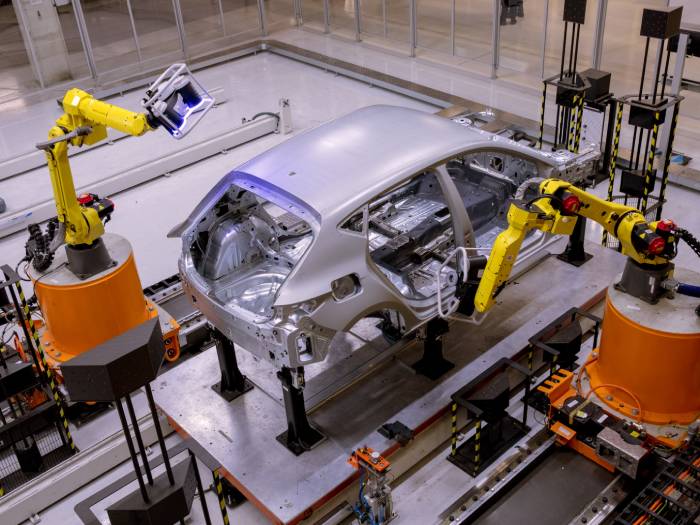SEAT uses photogrammetry to produce perfect car bodies
Precision is key in the automotive industry, and for the perfect car body the thickness of a sheet of paper can make all the difference. Photogrammetry makes production-line measurements faster, more efficient and more precise.
In football, one centimetre can make the difference between winning and losing - between a goal on the scoreboard or an offside called. In some sports, technology helps referees and umpires make the right decision. But in the automotive industry precision is measured in tenths of a millimetre, the equivalent of a sheet of paper, and is crucial when it comes to assembling the body.
The SEAT Measurement Technology and Meisterbock department takes care of this by measuring the bodywork on the production line. Until now, this process was carried out semi-manually. That’s now changed, thanks to an innovative non-contact technology that marks a turning point in the efficiency of the process once the car reaches the production line.
Photogrammetry and digital verification

“Photogrammetry is a non-contact optical measurement technology that enables us to capture millions of points of an object through photos, marking the depth and thickness of each space,” explains Pedro Vallejo, the head of the department.
On the production lines for the SEAT Leon and the Cupra Formentor, all the points collected are captured on a coloured map that indicates whether there are deviations from the standard. “In the digital image we can see 100% of the vehicle’s geometry lines, on both the interior and exterior, which guarantees that any changes are immediately detected,” adds Paco Triguero, Head of Internal Parts Measurement at SEAT.
Automatic measurement
Sets of parts are randomly selected from the assembly line to be thoroughly checked during each production shift. AGVs (automated robots) transport these components to the measuring facilities where 1,500 square metres of machines, equipped with cameras, work independently to ensure that all vehicles leaving the production line have the correct dimensions. In this way, safety and performance are guaranteed and any deviations can be quickly recalibrated.
Precision and speed

A car body is the sum of its different assembled parts. That’s why its measurements must be exact and precise. “In total, the machines take between 200 and 300 photos per assembly and 1,000 of the entire skeleton, which is equivalent to measuring seven million points per assembly and up to 98 million of an entire chassis. That’s 9,000 photos and 210 million points analysed per day,” Triguero continues, before noting that optical technology has saved up to 90% of the measuring time compared to conventional tactile measurements. “Before, we used to measure three parts in a day, whereas now we inspect 30 daily.”
“This has enabled us to profoundly transform the way we’ve been working for the last 20 or 30 years; we’ve trained workers in more highly qualified techniques and exponentially increased the information for each vehicle so that the customer receives the best possible car,” says Vallejo.
A milestone
Using photogrammetry for measurement is a pioneering and innovative process in the automotive industry and represents an improvement in terms of speed, precision and connectivity of the procedures. “We’re the first manufacturer to roll out large scale, continuous non-contact, automated measurement. By doing this, we’ve managed to ensure that the car maintains the same level throughout its life cycle,” Vallejo explains.
And thanks to Big Data and Data Science, the large volume of information now obtained with photogrammetry will be used in the future to detect unexpected situations in production before they occur. “We’re storing all this data so that artificial intelligence can examine the frequency of any deviations through a machine learning algorithm.” Now we’re able to locate them, but in the future we’ll be able to make predictions to recalibrate the machine that produced the deviation”, concludes Vallejo.
Source: SEAT S.A.
